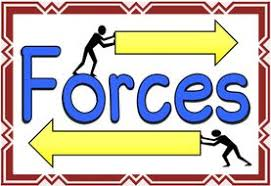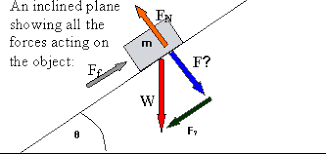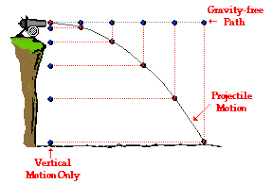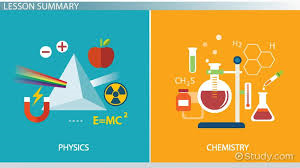
- Lets check these first links in order to find out what a force is and which is the
best way to explain it by writting :
+ Now, take your workbook and answer these questions using your own words:
1- What is a foce?
2- How can be forces measured?.
3- What is the connection between forces and acceleration?.
+
Forces LINK 1 ( forces problems about concurrent and non concurrent forces )
+
Forces LINK 3 ( links to websites about forces, dynamics and kind of forces )
+
Forces LINK 7 (physicsclassroom website about the whole Forces lesson)
- Forces, vectors and Newtons laws worksheets and peer talking assessment
rubric :
- Concurrent forces :
LINK
In physics, concurrent forces are defined as forces that pass through a
common point. In other words, a concurrent force system is a set of two or
more forces whose lines of action intersect at a point at the same time.
* Concurrent forces image example : FOTO * Concurrent forces Video example exercise : VIDEO
* Net Force calculation on concurrent forces exercises with the
same and opposite direction : LINK * Tug of war game, concurrent forces exercise example :
FOTO
* Parallelogram method for balanced forces in equilibrium :
FOTO * Concurrent forces ex1 :
FOTO * Concurrent forces ex3 :
FOTO * Concurrent forces SCALE ex5 :
FOTO * Exam from past year about concurrent and non concurrent forces :
(At the following pic you find the answers to the exercises from this exam) :
LINK
* More complicated exercises examples related to concurrent forces
when involving coplanar ( 2-dimensional ) forces. Examples about
two tugboats towing a cargo ship (exercise 1) :
LINK
- Non concurrent forces :
LINK
A couple is an example of a non-concurrent force because its line of action does not intersect at one point.
* Non concurrent forces image example : FOTO * This is a great link where you can find and learn a lot about
working out resultant net forces on non concurrent like and
unlike parallel forces systems :
LINK ** And here you can check it but in a pdf file :
PDF
- Website with problems having a
TORQUE involved :
Website
- You can follow a nice explanation video about NON CONCURRENT PARALLEL FORCES separated certain distance :
* At this link you can look up how to work out the resultant of of parallel coplanar forces :
LINK
+ And at this website you have a very clear explanation about an example of two unlike parallel forces
exercise and how to find out the net resultant force and where its point of application is plot :
- After youve practiced and watched the different videos, try to do the following exercise by your own. Check previous videos as many times as you need to develope the exercise by yourself. In case you cannot achieve the problems solution you have the problem explained at the video below :
> Exercise :
A 15kg metal bar 6m long has two objects hanged at the opposite ends of the bar. At the left end of the bar hangs an 20kg object and at the right end of the bar the second 30kg object. Find where exactly the net force must be placed in order not to let the system fall. Work out the value of the net or balance force, the exact spot it must be placed, the direction and if it is like or unlike to the forces involved initially.
+ Now try by yourself the following exercises about non concurrent parallel forces:
Wording exercise 1 :
FOTO ( like forces )
Solution exercise 1:
FOTO Wording exercise 2 :
FOTO( unlike forces )
Solution exercise 2 :
FOTO
+
Activity about first Newtons law : Watch these
VIDEO1 and
VIDEO2 then do the following :
a) Whats the first Newtons law and what does it talk about? Write the answer
down on your notebook. Make a Word file to do it if you prefer.
b) Draw an outline or a design or an example in which you could explain the
first Newtons law is being applied.
+ Activity about second Newtons law :
a) Read what this
website has to say about second Newtons law and
summarize the most important at your notebook or on a Word file.
b) Go to this
SIMULATOR website and check how second Newtons law
can change objects motion.
+ Activity about third Newtons law :
a) Read the text at the following
LINK and write on your notebook what
third Newtons law is and what it says. You can achieve the activity on
a Word file too if you prefer.
b) Go to this
LINK and give an answer to every example and draw the
action and reaction forces acting in each one.
+
NET FORCE and 2nd Newtons law : Go to this
link.
+ RESISTIVE OR FRICTION FORCE and 2nd Newtons law :
Take a look at this
LINK1 and later at this
link2.
+ Next check this fantastic webpage about 2nd Newtons law and all the main
issues involved. Youll find drawings, exercises, examples, definitions, it is
just great!! , it also explains friction force with exemples :
+
NEWTONSS LAWS GLIMPSE : FOTO ( text with gaps to fill out )
+ Specific ACTIVITIES ABOUT 2nd NEWTONS LAW :
* Steps to follow to work out 2nd Newtons law problema with friction force
involved. Check it to see how to figure out this kind of problems :
FOTO * 2nd Newtons law leaflet with exercises to practice :
PDF
+ Solution of the 6 problems from the last leaflet about 2nd law :
* At this link you can find explanations, from easy ones to more complicated ones,
about how to figure out resultant forces within different force systems. You can
also have there a wide variety of problems with solutions : LINK ( At the end of that website youll find a link with problems ).
+ This is a nicely done webpage from BBC in order to revew Newtons main
three laws about motion. You have there explanations, exemples, videos,
graphs, outlines, working out problems and much more. Just check it!! :
- HOOKEs LAW :
* TASK TO DO :
Pay attention now to the following
PIC and the related
GRAPH showing a
spring stretching and then answer the following questions and exercises.
+ Question 1 : Whats happening at the PICs image?. Explain it and
write it down.
+ Question 2 : Imagine that each weight that is added at the
PICs
image is about 7N. Write down the formula you should
use you explain the Force the spring is doing. Afterwards
figure out the spring stiffness constant using that formula
and the values of displacement and force that are
+ Question 3 : Take a look again at this Hookes spring law
GRAPH and
find the spring stiffness constant and also the stretching
spring will take when a force of 3N is applied.
*
Forces Lesson multiple choice TEST
- Forces in Architecture :
* Read
page 55 from your textbook about the importance forces have in
Architecture and how they are spread out within the building structure.
+ Look up this
Link 1 and
Link 2 about buttress ( contrafuertes ) in
architecture and the different ways that exist to spread out forces usind
+ If you wanna know more about Gothic architecture :
LINK
+ TASK TO DO :
Once you have already checked, read and looked up all this material
and these websites, just make a presentation about explaining and
showing how importants forces have been in architecture throughout
history and the methods and improvements that have been achieved
to make possible to buid bigger and greater buildings. You can make a
PowerPoint or just create your own file at your drive.






